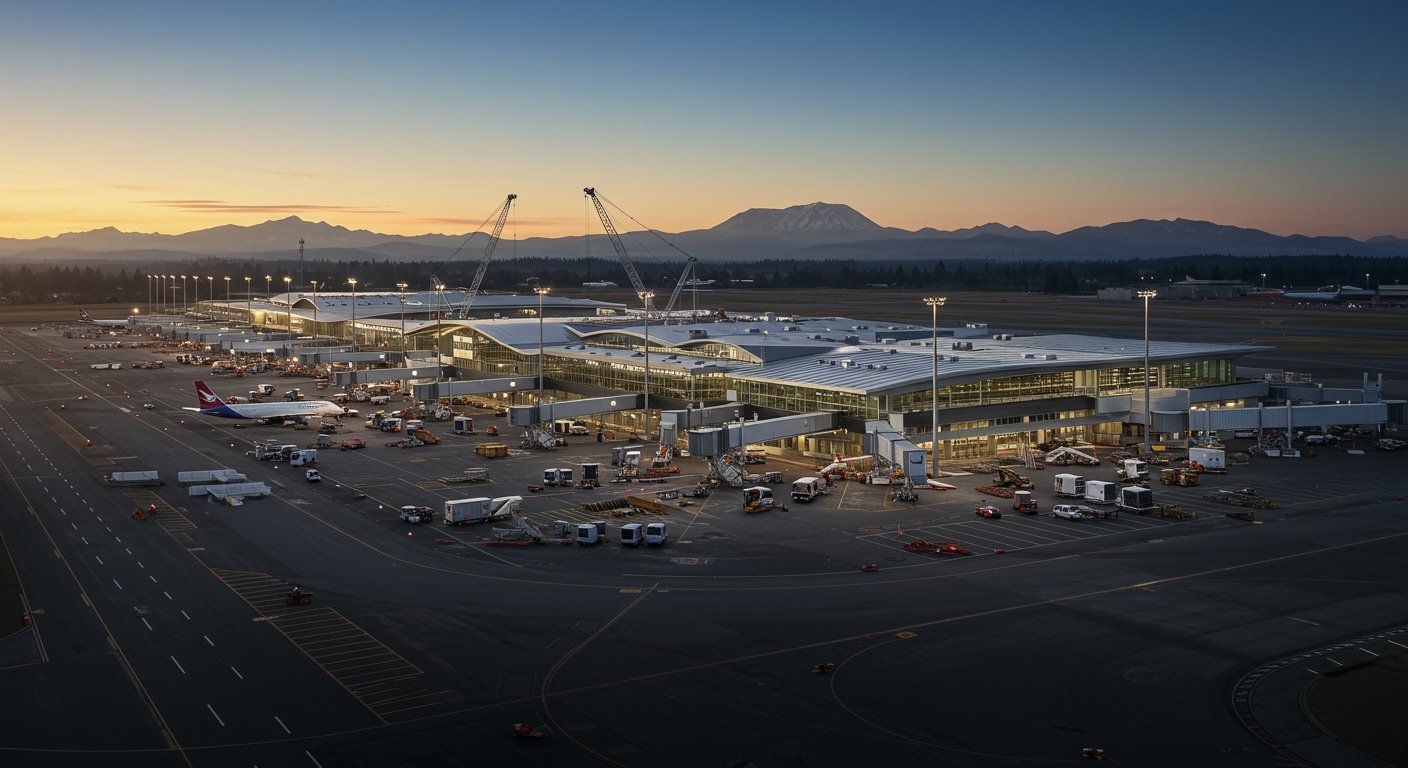REDMOND, OR – Redmond Municipal Airport, widely known as Roberts Field, has officially commenced a significant $180 million expansion project aimed at dramatically enhancing passenger capacity and overall comfort. The ambitious undertaking, which will add 80,000 square feet to the existing terminal facilities, is designed to modernize infrastructure and accommodate the robust growth the Central Oregon airport has experienced over the past decade.
Roberts Field serves as a critical transportation hub for a rapidly expanding region, and the need for increased capacity has become increasingly apparent. According to Airport Director Zachary Bass, the airport is projected to serve approximately 1.3 million passengers in 2025. This growth trajectory positions Roberts Field as the third-largest commercial airport in Oregon, trailing only Portland International Airport (PDX) and Eugene Airport (EUG). Bass attributes the surge in traffic primarily to sustained regional population increase and rising tourism, factors that have collectively contributed to a staggering 165% surge in passenger traffic over the last ten years.
Federal Investment Bolsters Project Funding
A substantial portion of the project’s funding is being bolstered by federal support. A $9.7 million allocation in federal grants, specifically designated for rural airports across Oregon, is playing a key role in making the expansion feasible. This funding was secured through the collaborative efforts of a coalition of Democratic members of Congress. Of the total rural airport funding, $8.4 million is specifically earmarked for Roberts Field.
The announcement of these crucial grants involved notable figures including Senators Jeff Merkley and Ron Wyden, alongside Representatives Val Hoyle and Janelle Bynum. Their involvement underscores the federal government’s recognition of the importance of investing in regional airport infrastructure to support economic development and connectivity in areas outside major metropolitan centers.
Scope and Features of the Expansion
The expansion project represents the culmination of approximately five to six years of planning and development work. Construction is now underway, with the full completion of the extensive upgrades anticipated by 2028. The project’s scope is comprehensive, addressing several key areas to improve operational efficiency and the passenger experience.
A significant feature of the expansion is the introduction of seven new jet bridges. These structures will allow passengers to board aircraft directly from the terminal building, a marked improvement that will largely minimize the need for passengers to walk outdoors to reach their planes, especially beneficial during inclement weather. While the total number of aircraft boarding places will remain at 11, the plan includes reserving four outside ramp spaces to maintain operational flexibility.
Beyond airside operations, the terminal interior is set for substantial upgrades. Plans include increasing the variety and availability of food options for travelers and significantly expanding seating areas within the terminal. These enhancements aim to provide a more comfortable and convenient environment for passengers awaiting flights.
In addition to practical amenities, the project includes a notable investment in the airport’s aesthetic and cultural appeal. Over $1 million is allocated specifically for the acquisition and installation of terminal art, promising to enrich the passenger environment with local and regional artistic expressions.
Preparing for Future Growth
Airport Director Zachary Bass highlighted that the expansion is not merely about handling current demand but is a strategic investment in the future of air travel for Central Oregon. By increasing capacity and modernizing facilities, Roberts Field is positioning itself to accommodate continued growth in passenger numbers and potentially attract new air service opportunities in the years to come.
The $180 million expansion represents one of the most significant infrastructure projects undertaken in the region in recent memory. Supported by key federal funding and driven by the undeniable demand for air travel to and from Central Oregon, Roberts Field’s transformation is set to redefine the passenger experience and solidify its role as a vital gateway for tourism and business in the state.
The project’s phased approach is designed to minimize disruption to ongoing airport operations as much as possible throughout the construction period leading up to its anticipated completion in 2028.




